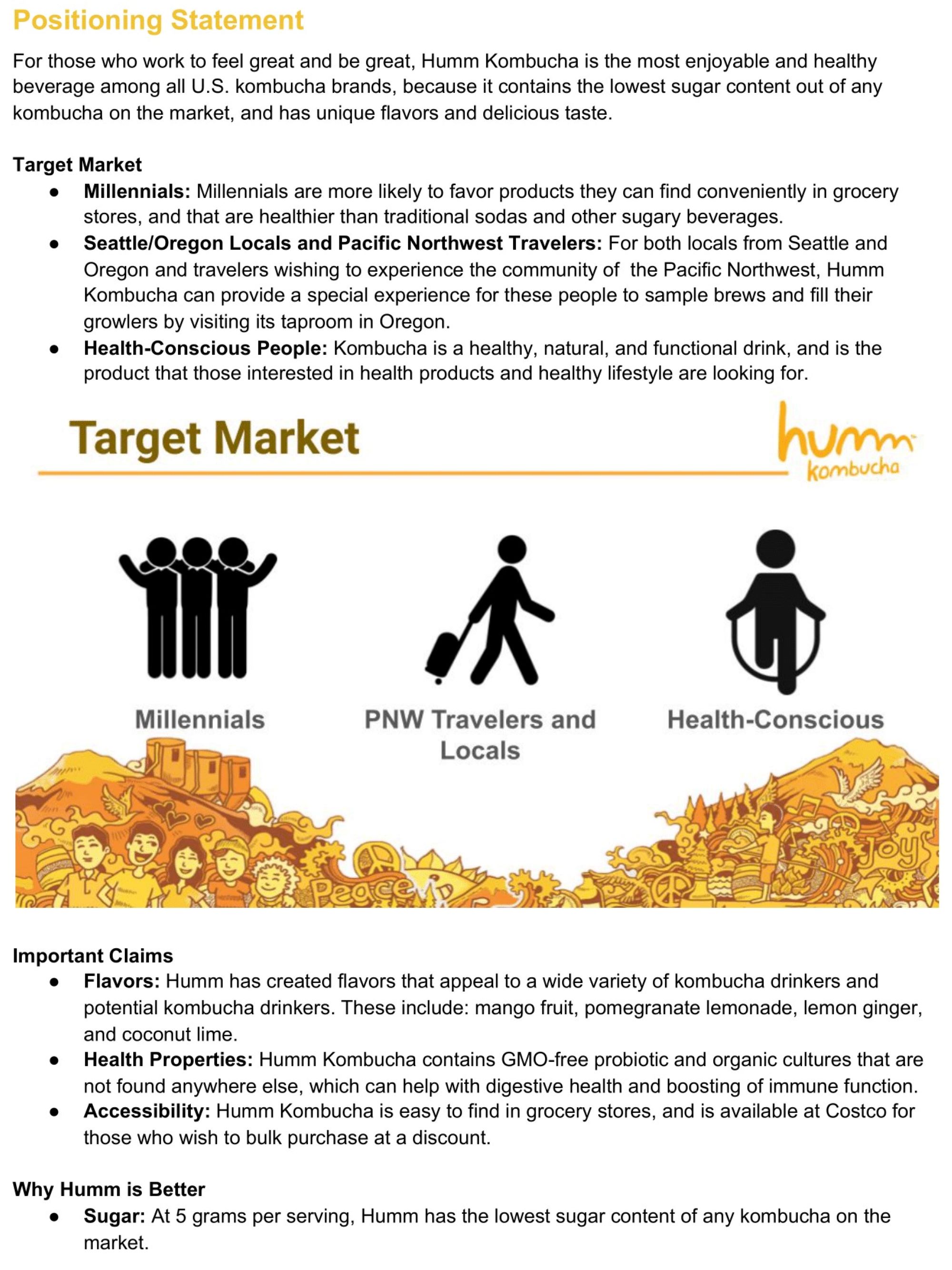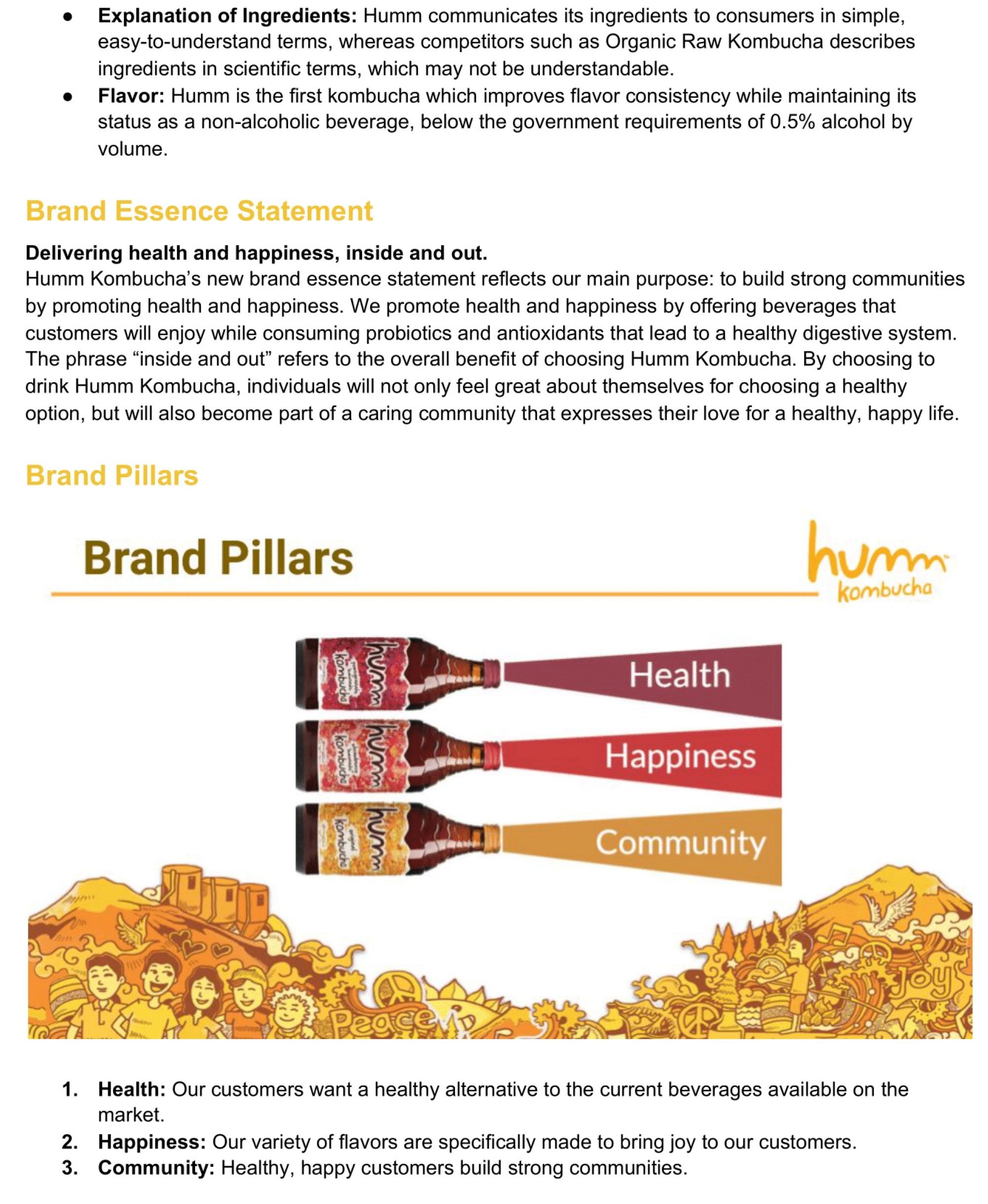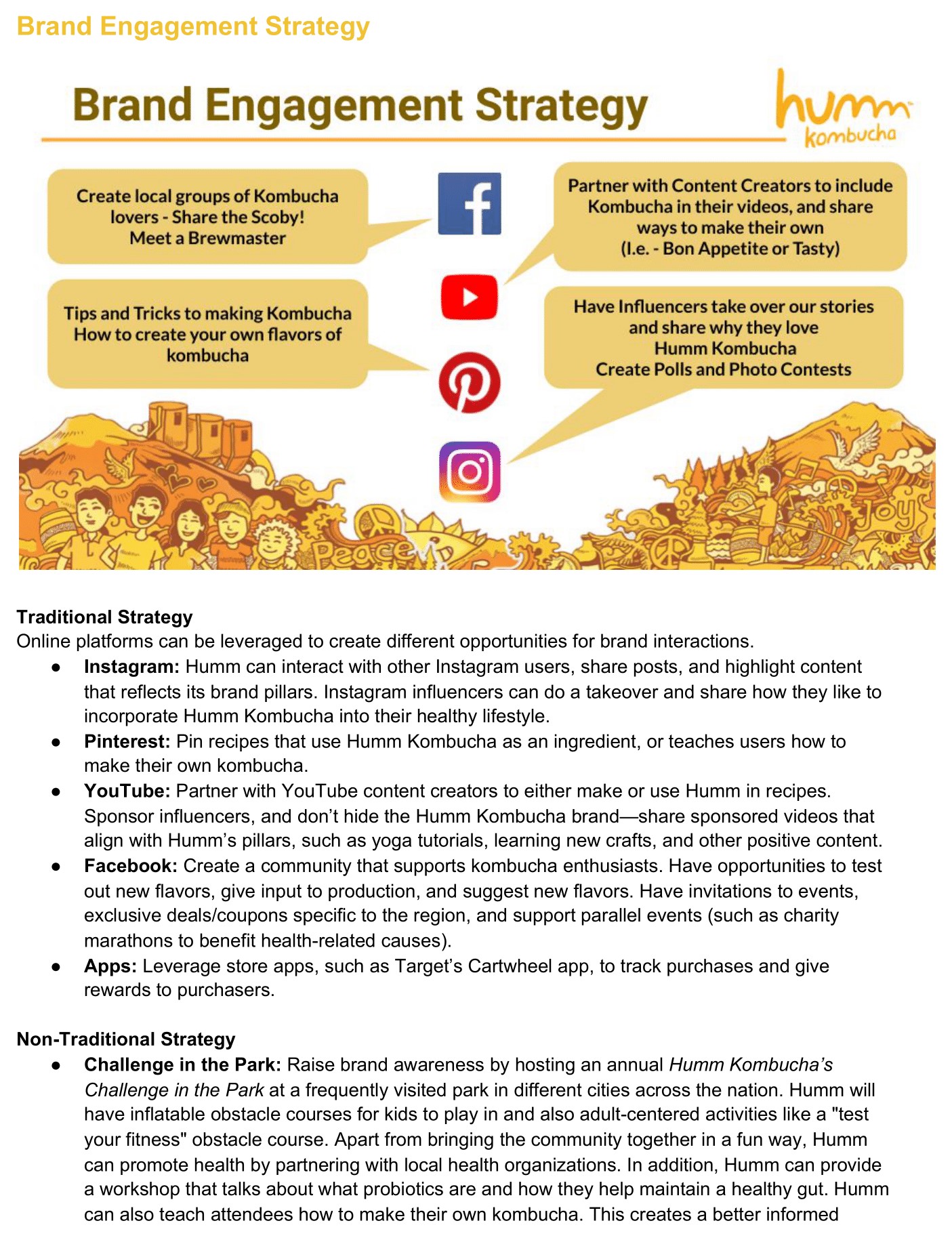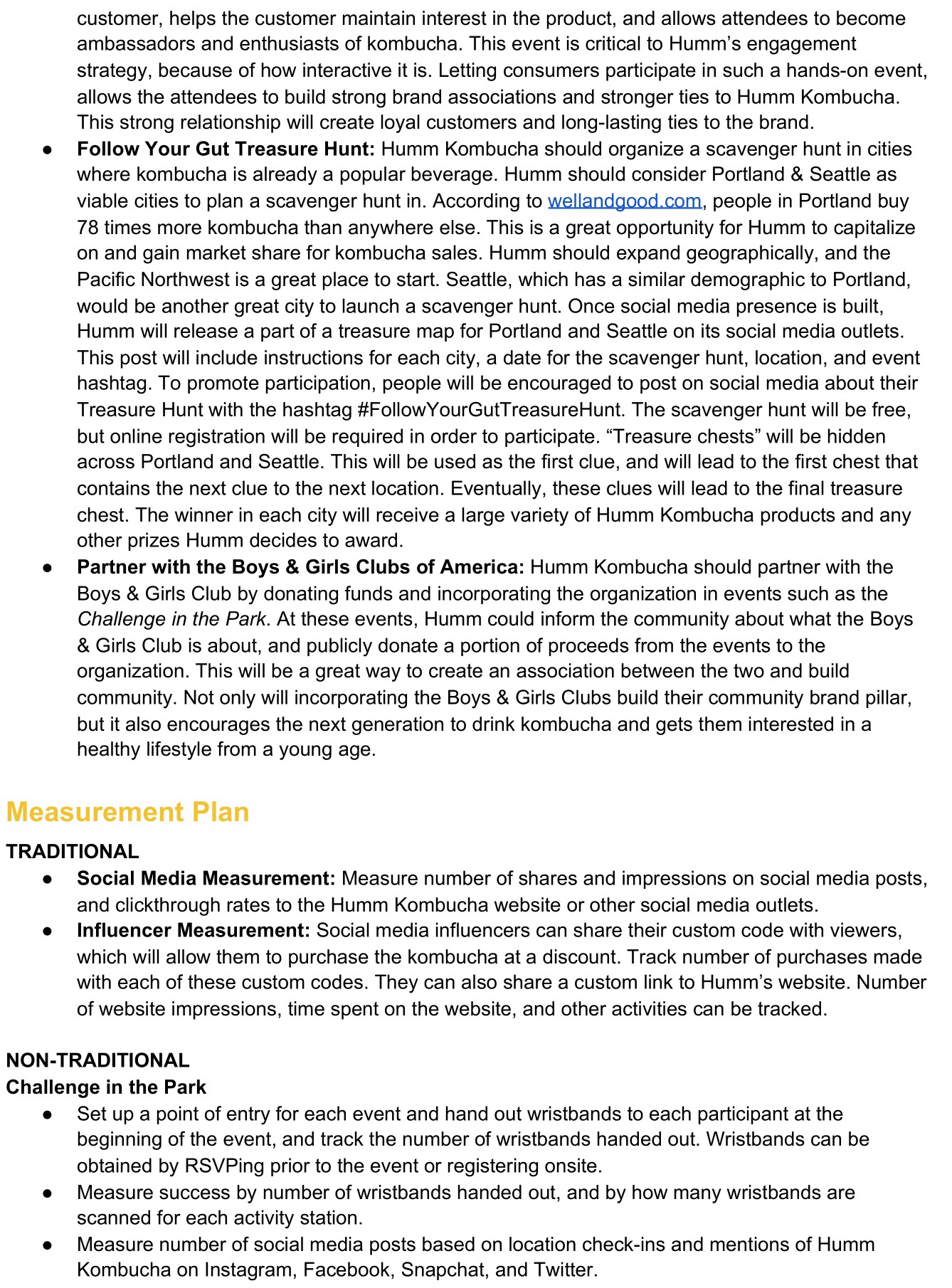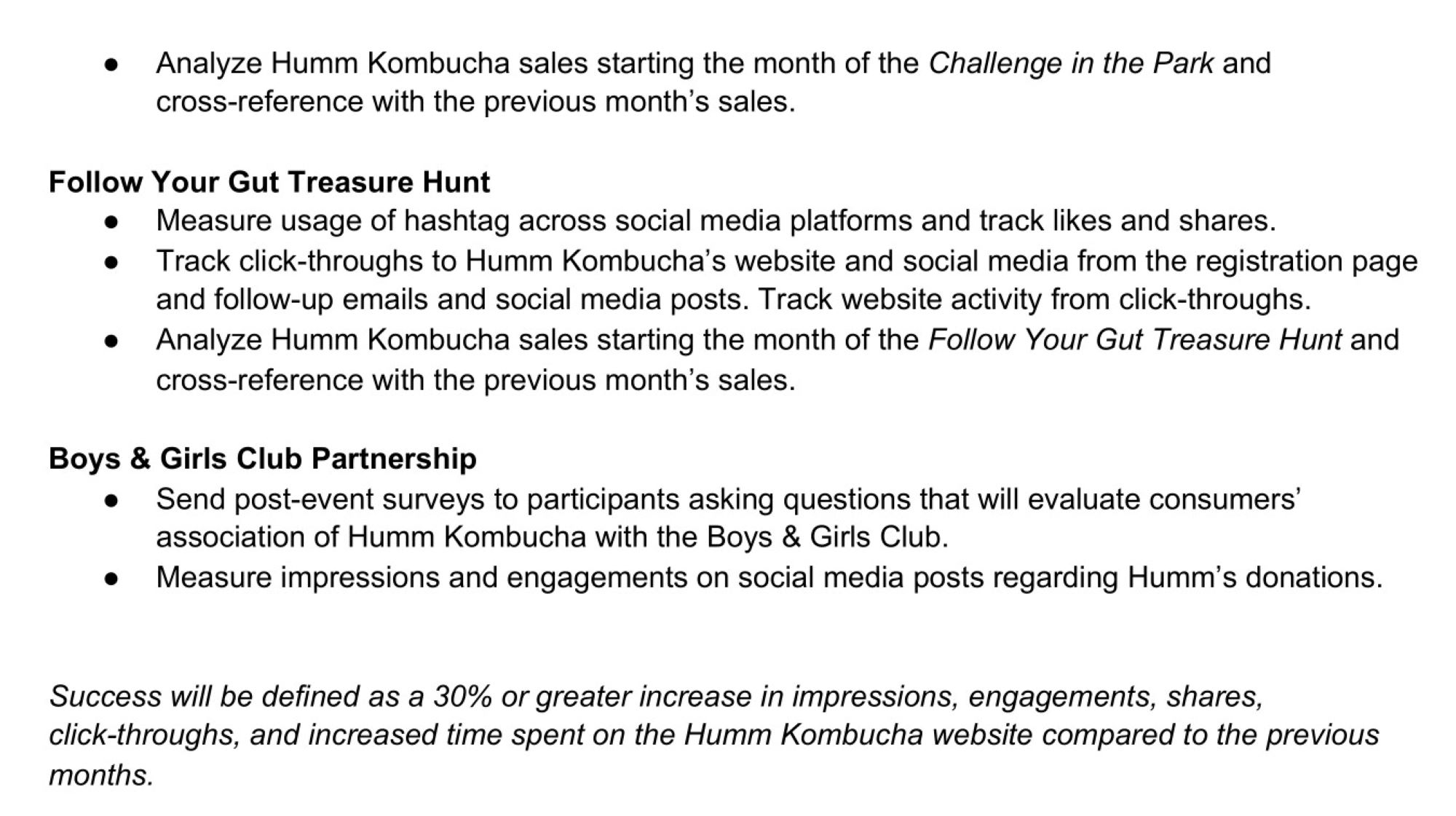Madison Colvin
Consumer Strategy and Brand Development
Humm Kombucha Case Study

Project Overview
One of my favorite classes I took in my undergraduate studies was Consumer Strategy and Brand Development. In this class my team and I were tasked to complete a variety of marketing case studies throughout the course of the class. One of the case studies that stood out and stuck with me was a Humm Kombucha Case study we completed. This case challenged us to boost brand engagement and attract new customers to the kombucha category. We were tasked to complete research on the brand’s current users, develop a core brand strategy, propose tactics to increase engagement, and present ways to measure success.
In case you are not familiar with the brand, Humm Kombucha was founded in Bend, Oregon in 2009. With a core message of health and happiness, the founders set out to improve the world one bottle of kombucha at a time. Starting with small batches of kombucha, the founders went door-to-door and immediately sold out their entire production.
A few short years later, Humm can now be found in all 50 states and now
has national distribution in over 1,500 Target retailers. Although they have expanded rapidly and their business is successful,
they are still looking to attract new customers and increase engagement with the brand.
To begin the project, we implemented surveys, interviews, and researched in hopes to learn more about the kombucha market, current user base, and Humm Kombucha’s competition. Our findings showed that their current user base was very loyal, but kombucha is a niche market with customers of similar backgrounds. Through our research we found that the majority of kombucha is consumed by health conscious and active individuals. Due to these findings, we chose to focus our brand engagement strategies around individuals who lead active and healthy lifestyles and target consumers who align with Humm Kombucha’s values.
From this case study I learned how important it is to understand your customer base and your potential target audience in order to expand your brand and business. This case challenged me to focus on the user’s wants and needs and how to make the given brand appealing to that target market.
The following content summarizes our recommendations and proposed brand positioning based on our knowledge of the brand.

